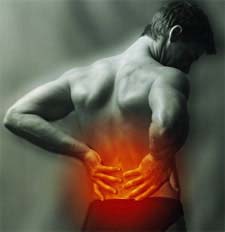 It’s so bad that she canceled her concert tour.
It’s so bad that she canceled her concert tour.
Here’s the state-of-the-art (not including pharmacology and surgery) for treating lower back pain (LBP) from the North American Spine Society.
Back schools, brief education, and fear-avoidance training
- Back schools are not recommended for chronic LBP.
- Brief education is OK, but not as an alternative to other treatments.
- Fear-avoidance training is recommended in a rehabilitation program as an alternative to spinal fusion.
Cognitive behavioral therapy
- An effective component in the overall treatment of chronic LBP.
- Should be combined with other treatments, but the best combination isn’t known.
Herbal, vitamin, mineral, and homeopathic supplements
- More information is needed before recommending any nutritional supplements for controlling chronic LBP.
- The evidence supporting B12 injections should be replicated.
Lumbar extensor strengthening exercises
- Lumbar extensor strengthening exercise alone or with other treatments is more effective in the short term than no treatment and most passive treatments for improving pain, disability, according to patients with chronic LBP.
- There’s no clear beneï¬t from lumbar extensor strengthening exercises compared with other exercise programs.
Lumbar stabilization exercises (LSE)
- Moderate evidence that LSE improves pain and function.
- But it’s no more effective than a less speciï¬c general exercise of manual therapy.
- More information is needed on the types of patients and the best settings and exercises to benefit from LSE.
Massage
- Massage improves symptoms and function.
- Although costly, it might save money by reducing visits to healthcare providers, the use of pain medications, and costs of back-care services.
- The effects of massage are improved when combined with exercise and education and when delivered by a licensed therapist.
- The beneï¬cial effects last at least 1 year after the end of sessions.
- Although it seems that acupressure is better than classic massage, this needs conï¬rmation.
McKenzie method
- Most importantly, it’s a more reliable system of assessment and classiï¬cation for selecting treatment compared to other examination procedures.
Acupuncture
- Compared to no treatment, acupuncture provides short-term pain relief and functional improvement.
- Compared to other treatments, acupuncture is not more effective for pain relief or functional improvement.
- Given the inconclusive evidence for the effectiveness of acupuncture compared to sham acupuncture, more studies are needed to determine its value in chronic LBP.
Physical activity, smoking cessation, and weight loss
- Moderate evidence that physical activity plus general aerobic and strengthening exercises or aquaï¬tness is more effective than nonactive controls.
- Moderate evidence that different types of physical activity programs are equally effective at improving pain and disability.
- No evidence that smoking cessation or nonoperative weight loss helps treat chronic LBP, although the studies are of low quality.
Prolotherapy
- No evidence that prolotherapy injections are effective in the absence of other treatments.
Spinal manipulation and mobilization
- Moderate evidence that spinal manipulation with strengthening exercise is similar to prescription non-steroidal anti-inflammatory drugs with exercise.
- Moderate evidence that flexion-distraction spinal mobilization is superior to exercise in the short term and at least as good long term.
- Limited to moderate evidence that spinal manipulation is better than physical therapy and home exercise.
- Limited evidence that spinal manipulation is at least as good as chemonucleolysis (injecting an enzyme into the spine) for disc herniation.
- Limited evidence that spinal mobilization is inferior to back exercise after disc herniation surgery.
- For mixed (but predominantly chronic) LBP, there’s strong evidence that spinal manipulation is similar in effect to combined medical care with exercise instruction.
- Moderate evidence that spinal manipulation is superior to general medical care and similar to physical therapy.
- Limited evidence that spinal manipulation is better than hospital outpatient care for pain and disability.
- Limited evidence of short-term superiority of spinal manipulation over medication and acupuncture.
Transcutaneous electrical nerve stimulation (TENS), interferential current, electrical muscle stimulation, ultrasound, and thermotherapy
- Although electrotherapeutic modalities and physical agents are frequently used, few studies support their use.
- Most TENS studies are of poor quality.
Traction therapy
- More evidence against than for using traction therapy as a treatment for LBP only.
Trigger point injections
- The objective evidence for trigger point injections and dry needling in chronic LBP are questionable.
Watchful waiting
- Watchful waiting is indicated in all cases of acute LBP, including recurrent episodes, as long as there are no signs or symptoms indicating the need for urgent treatment.
- Contraindications to waiting are listed here.
- Age older than 70 year
- Duration greater than 6 weeks
- Focal neurologic deï¬cit progressive or disabling symptoms
- History of cancer
- Immunosuppression
- Intravenous drug use
- Prolonged use of corticosteroids and osteoporosis
- Recent signiï¬cant trauma or milder trauma, and age O50 y
- Unexplained fever
- Unexplained weight loss
The bottom line?
For patients and their families (not to mention healthcare providers) this is a useful document to read and guide treatment.
2/12/08 20:16 JR